Oslo Journal, Part II
On the heroic Nansen; a liberty-loving think tank; a palace’s gardens; and more

Dear readers: The Oslo Freedom Forum was held earlier this week. OFF is the annual human-rights gathering in the Norwegian capital. I have said a little about this year’s Forum already. I will have considerably more to say later. In the meantime, I hope you might like an Oslo journal. Yesterday’s installment—Part I—can be found here.
‘How now, brown cow?” goes an old, important line. I am in the land of brown cheese. People slice it, thin, at breakfast. I like the cheese, and I like the color—almost like milk chocolate (the color, I mean, not the taste).
***
Do people eat dessert at breakfast? Chocolate, cookies, and cake? They certainly do in hotels.
When in Rome, or Oslo . . .
***
They like their licorice here in Scandinavia. So do I. I’m not sure that anyone is neutral about licorice—people either like it or not.
***
Many, many of the store names in Oslo are in English. Is that for the sake of tourists? Or . . . just because?
Here are three quick names: “Specsavers” (for discount glasses). “Walk-In Closet” (for clothes, of course, and accessories). And, my favorite: “Attitude.” This is a tattoo parlor. Perfect name.
Oh, one more: a salon called “Hair 4 U.” Well, not for all of us . . .
***
Please have a look at one of my all-time guys, Fridtjof Nansen. Philip Noel-Baker said, “To all his friends and colleagues, Nansen was the most gifted and, in all true elements of human greatness, the greatest of great men.”
Here he is, sculpted:
Noel-Baker uttered those words when delivering his Nobel lecture. He had won the peace prize, in 1959. Noel-Baker was an English politician, diplomat, etc. Nansen received the prize in 1922.
He was a Norwegian—and, as you may recall, the Nobel Peace Prize is awarded by a Norwegian committee. But its members are hardly biased toward their own.
In the 125-year history of the prize, only two Norwegians have received it. And they did so in consecutive years, curiously enough.
Christian Lange was a co-laureate in 1921. (He won along with a Swede, Hjalmar Branting.) Nansen, as I have said, was the laureate in ’22, by himself.
“How to describe him?” I wrote in a history of the prize (Peace, They Say).
In thumbnail fashion, as follows: scientist, explorer, athlete, professor, diplomat, executive, humanitarian. He was famous all the world over, a living legend. (Every now and then, that cliché is apt.) Nansen resembled a future movie hero, Indiana Jones, although Nansen was perhaps more wide-ranging, in addition to real.
Yes. Maybe I could go on, for a bit:
Here are a few brushstrokes from this life (1861–1930): At 17, Nansen won Norway’s distance-skating championship. The next year, he broke a world speed-skating record. There were skiing exploits, too. He became a zoologist, an oceanographer, an anthropologist. He explored and charted the Arctic regions, enduring many hardships and braving many dangers. He wrote The First Crossing of Greenland and Eskimo Life. He curated at the Bergen Museum. He was Norway’s first ambassador to Great Britain.
All right, but why did Nansen win the Nobel prize?
After the war, the world, particularly in the form of the League of Nations, asked him to do several important things. The League asked him to take charge of the repatriation of those prisoners of war whose cases were still unresolved. There were hundreds of thousands of them. Then the League asked him to take care of refugees—who were all too numerous, too—making him its first high commissioner. In this capacity, he created the famous “Nansen passports,” which gave the homeless and storm-tossed something to hang on to, and present. Among the holders of these passports were Rachmaninoff, Stravinsky, Chagall, and Pavlova. Later, the Red Cross asked Nansen to relieve mass famine in Russia. (By the way, his assistant there was Quisling—who was not worthless his entire life.) Then the League asked him to deal with the population exchanges and resettlement following the Greco–Turkish War.
That’s enough. My breezy little travel journal threatens to become a history.
***
Who is this fellow, or woman, in central Oslo? In any event, I have a thought, somewhat strange: The Space Age now seems long ago (and a space age ought to stand for now):
It is not my first memory, but one of them—one of the very first. Men first walked on the moon in the summer of 1969. I was five. We were at my grandparents’ cottage. We looked up at the moon, seeing what we could see (not much).
***
Not every day do you see a building patterned as this one is. In fact, I can’t remember seeing another like it:
***
I walk past a graveyard (no, I do not whistle) on a rainy day. People are huddled, having buried someone. Scenes of mourning are the same, or similar, around the world, I would think. They have a strong effect on a person.
***
Impervious to the rain—if not welcoming it—is this character:
***
In front of the Storting (Norway’s parliament), I see a demonstration for Ukraine (replete with flags). Two days later, I see another one. The cause is urgent, and has been for years.
***
One of the organizations I most admire, anywhere, is Civita. It is a liberal think tank here in Oslo. “Liberal” is its self-description. Civita, on its website, says that it is dedicated to “liberal ideas, institutions, and policies,” for the purpose of promoting “a society constituted on the principles of individual liberty and personal responsibility.”
The words “liberal” and “conservative” are used differently in different countries (and in different eras). We could talk about that for an hour or two.
My friend Eirik Løkke, of Civita, has organized a breakfast. Before an audience, I’m to talk U.S. politics, along with Henrik Syse, an eminent Norwegian scholar, a public intellectual.
Incidentally, he once served on the Norwegian Nobel Committee. Today, he is the chairman of the country’s Alfred Nobel Memorial Foundation.
He has been in the political arena all his life, or at least adjacent to it: his father, Jan P. Syse, was a politician, who became prime minister in the late 1980s.
From what I can tell, Eirik Løkke and Henrik Syse know more about America, and its politics, than do all but a handful of us Americans. Man alive, are they immersed.
Our session is to begin at 8 o’clock—early, in my book. And get a load of this: The audience (of about 100) are quiet and in their seats at five minutes to, ready to go.
Where I live, this would . . . not happen, let’s say.
***
The gardens of the Royal Palace are replete with blooms, as they always are at this time of year. One quick picture, maybe:
Maybe one more:
While I’m visiting the park—these gardens—nature is calling. I think, “Gee, can you take a whiz here? There’s certainly enough cover. You could do it undetected.” In America, I would have done it in a heartbeat. Here on foreign soil—royal soil, at that—I wait . . .
***
Across from the palace, on Henrik Ibsen Street, lies the U.S. embassy, or the former one: It served as our embassy from 1959 to 2017. The building is a Saarinen design—classic.
(Eero Saarinen also did Dulles Airport. And the Gateway Arch. And so on.)
Today, the embassy is a restaurant, or a cluster of restaurants. Maybe an “event space,” too. It is not entirely clear to me. In any case, the name of the place, overall, is “Ambassaden.” The place is a kick to be in, some friends and I find, on a gala evening.
A question: When he was alive and working, did people imagine that the word “classic” would be applied to Saarinen and his architecture? Such is the way of art, I suppose.
Thank you for joining me today. See you tomorrow, for this journal’s conclusion.




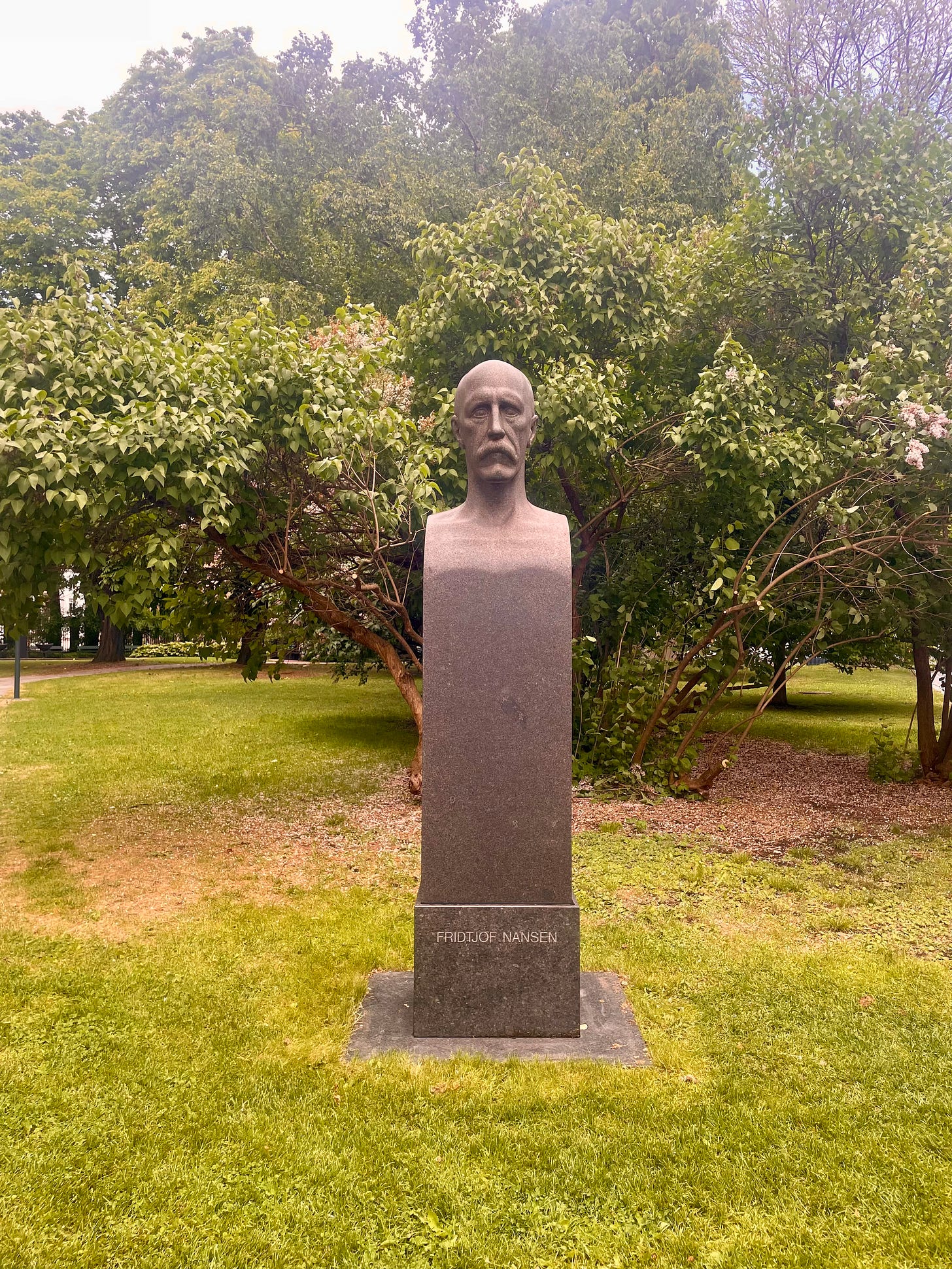
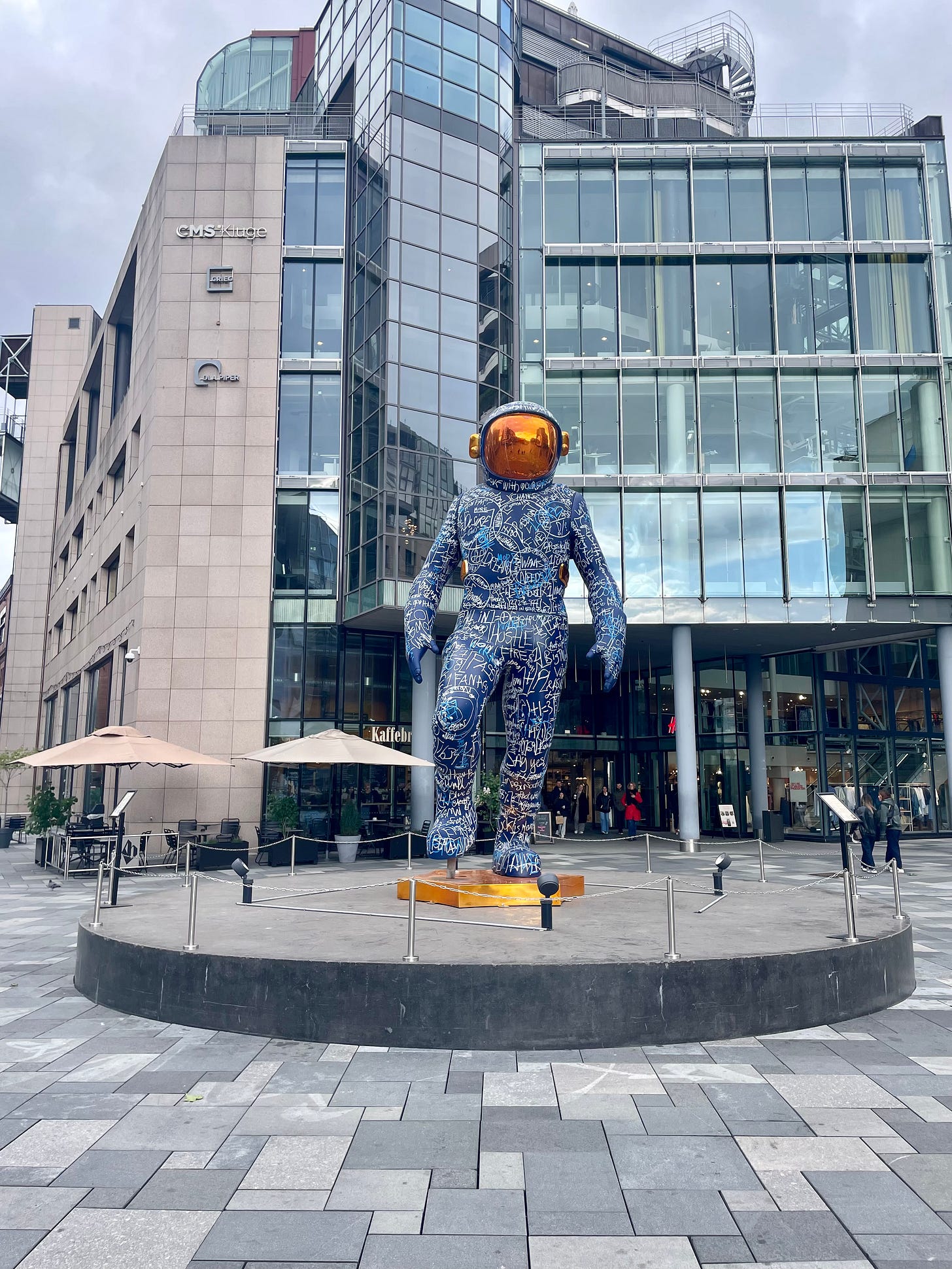
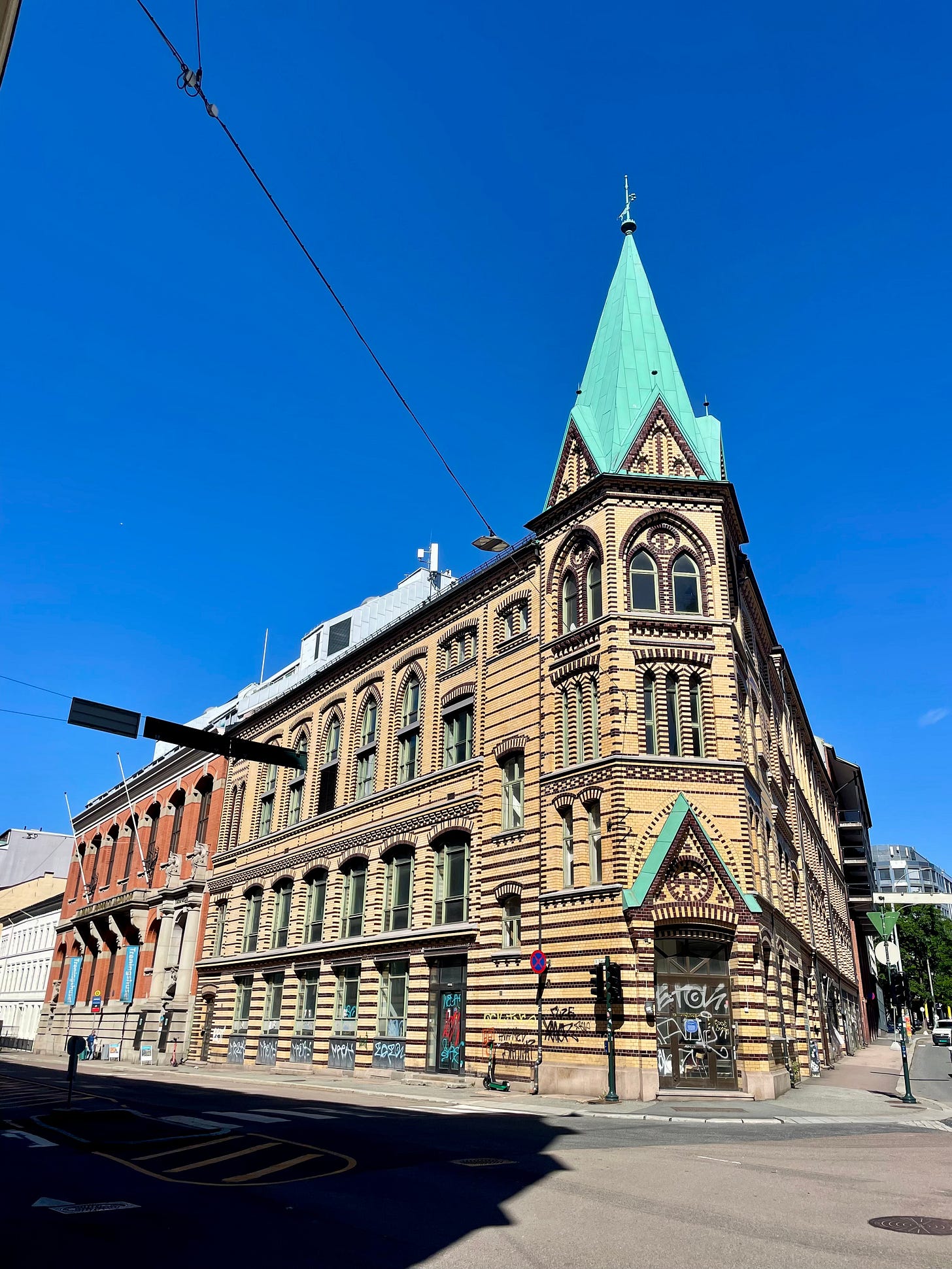
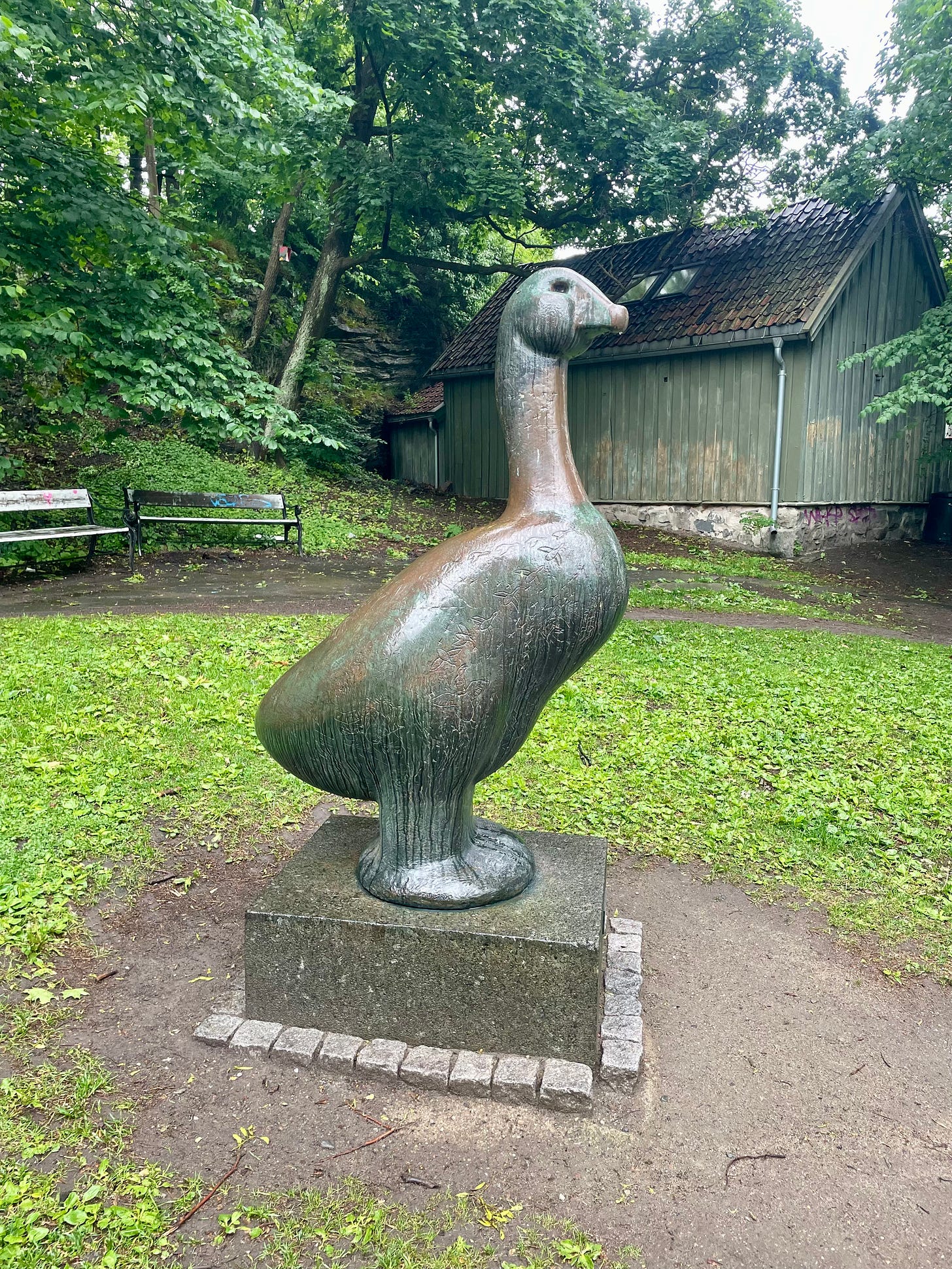
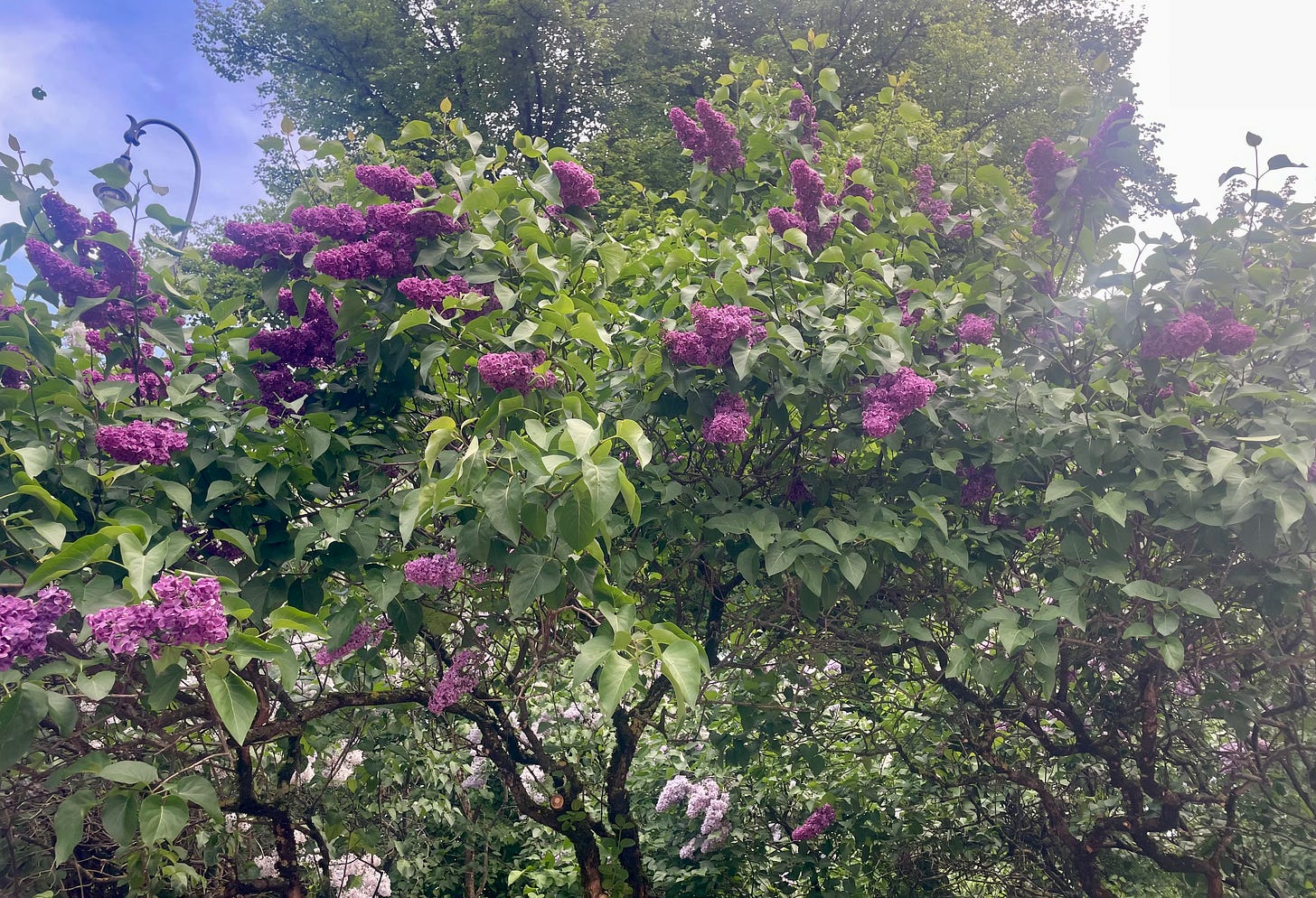

I’ve been meaning to ask you for years: how did you first get involved in this? Moderated a panel first year? I’m getting too old to remember! ❤️🙏
Sure Americans eat dessert for breakfast— what’s the difference between cupcakes and muffins? Pancakes and crepes?